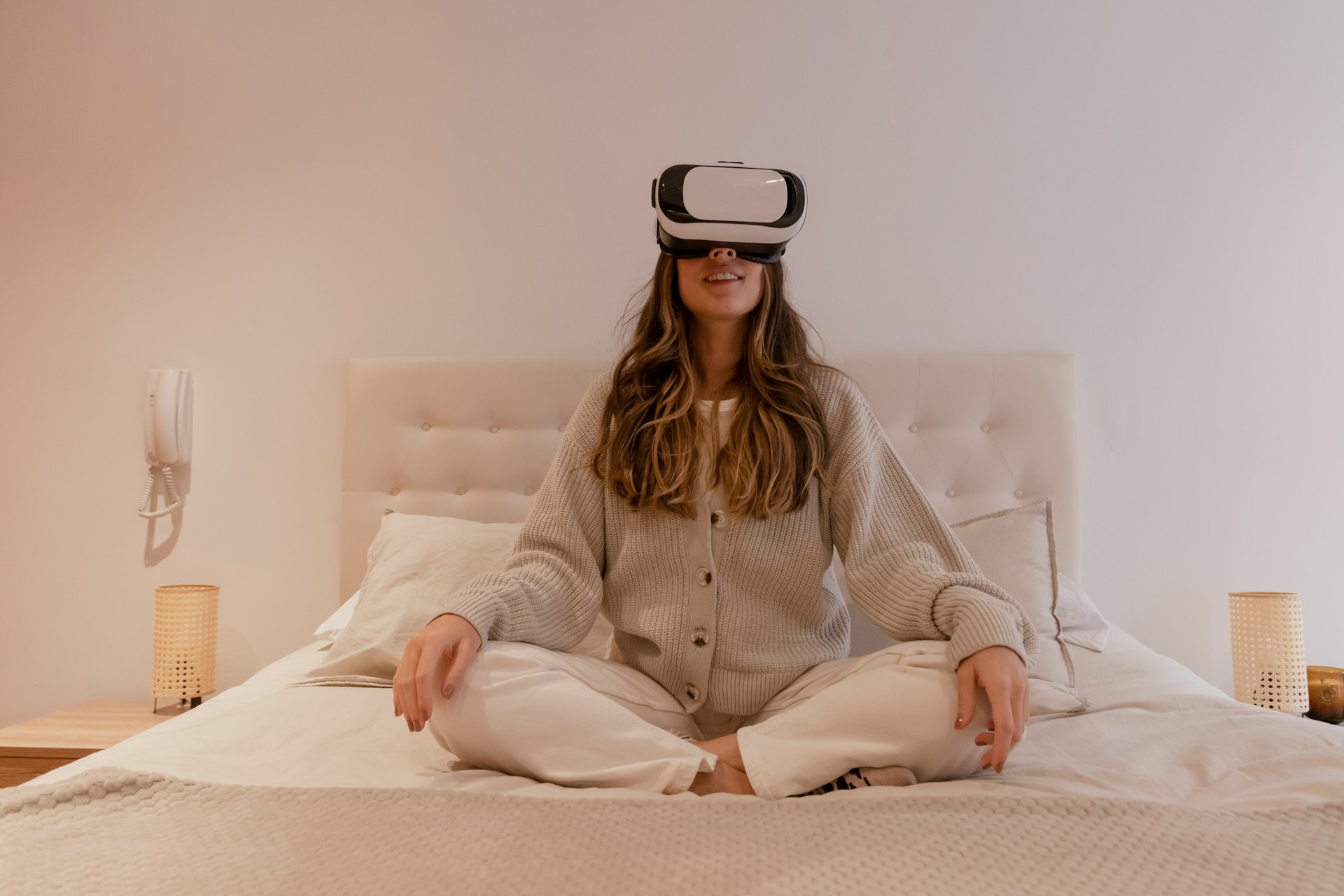
Virtual Reality Therapy for mental wellness is no longer science fiction—it is the future of psychological care. By merging neuroscience, psychology, and digital technology, therapists now create fully immersive environments where people can safely explore, confront, and heal from emotional challenges.
In a typical session, users wear a VR headset that places them inside a simulated world designed for therapeutic purposes. This setting might be a peaceful forest, a busy street, or even a recreation of a distressing memory. The immersive experience stimulates real emotional reactions, allowing therapists to guide patients toward healthier coping mechanisms.
Virtual reality therapy for mental wellness engages both the mind and body. Patients feel physically present in the virtual space, which encourages deeper emotional processing than traditional talk therapy alone can achieve. This sensory-rich experience makes treatment both effective and transformative.
How Virtual Reality Therapy Supports Emotional Healing
At the core of virtual reality therapy for mental wellness lies exposure therapy—a well-established psychological approach that helps people confront fears in a safe, controlled way. Through virtual simulations, patients face anxiety-inducing situations without real-world danger. This process gradually retrains the brain’s response to stress, helping individuals build confidence and resilience.
A person with social anxiety, for example, might use virtual reality therapy to practice conversations in simulated public settings. Someone coping with post-traumatic stress could re-experience a triggering event with the guidance of a therapist, slowly reducing the emotional intensity attached to that memory. The goal is not to erase the past but to empower patients to reclaim control over their responses.
Virtual reality therapy for mental wellness also benefits those suffering from depression. Immersive environments can be programmed with calming visuals, soothing sounds, and guided mindfulness exercises that lower stress hormones and boost serotonin levels. As the patient learns to relax within these virtual spaces, emotional regulation in real life improves naturally.
The Benefits of Virtual Reality Therapy for Mental Wellness
The advantages of virtual reality therapy for mental wellness extend beyond convenience. The immersive nature of VR captures a patient’s full attention, encouraging engagement that traditional therapy sometimes struggles to maintain. This heightened involvement deepens emotional awareness and fosters genuine connection between therapist and patient.
Safety is another major advantage. In the virtual environment, therapists can control every detail of exposure—adjusting visual intensity, sound levels, or scenario complexity to match the patient’s comfort level. This balance between realism and control creates a safe space for emotional experimentation, helping patients progress at their own pace.
Accessibility is rapidly improving as well. Portable VR devices and online therapy platforms now make virtual reality therapy for mental wellness available from home. People living in remote regions or facing mobility challenges can receive professional mental health care without traveling long distances. Therapists can monitor sessions remotely, ensuring consistent guidance and support.
Personalization adds another layer of strength. Each therapy session can be tailored to individual needs—whether that means designing a custom environment, adjusting lighting and sounds, or integrating real-time feedback from the patient’s biometric data. This flexibility helps create therapy that feels personal, empathetic, and effective.
The Future of Virtual Reality Therapy in Mental Wellness
The future of virtual reality therapy for mental wellness promises even deeper integration with artificial intelligence and biofeedback technologies. Soon, virtual systems will be able to analyze heart rate, breathing rhythm, and facial expressions to adjust therapeutic content instantly. If a patient’s anxiety level rises during exposure, the system could automatically introduce calming visuals or softer sounds to maintain emotional balance.
Beyond clinical settings, virtual reality therapy for mental wellness is expanding into schools, workplaces, and wellness centers. Educators are using immersive simulations to teach empathy and stress management to students. Corporate wellness programs employ VR meditation sessions to reduce burnout and improve employee focus. As more people experience the mental health benefits of VR firsthand, society’s perception of therapy is beginning to evolve.
However, with great potential comes responsibility. Developers and mental health professionals must ensure that virtual reality therapy for mental wellness adheres to strict ethical guidelines. Data privacy, informed consent, and emotional safety must remain priorities as this technology becomes more mainstream. The aim is to use innovation not as escapism but as empowerment—a means of reconnecting people to reality through healing.
A New Era of Healing Minds
Virtual reality therapy for mental wellness represents the dawn of a new era in emotional care. It bridges the gap between imagination and healing, enabling individuals to process trauma, confront fears, and rediscover calm within an interactive digital world.
Unlike conventional therapy, which relies heavily on conversation, this immersive approach gives patients the ability to experience change physically and emotionally. They no longer just talk about healing—they step into it.
As technology continues to advance, virtual reality therapy for mental wellness is poised to become an essential component of psychological treatment. Its capacity to blend science, empathy, and innovation makes it one of the most promising mental health breakthroughs of the twenty-first century.
In the years ahead, virtual reality therapy may help millions find balance, resilience, and hope—one immersive experience at a time. What began as an entertainment tool is now transforming lives, redefining what it means to heal the human mind.